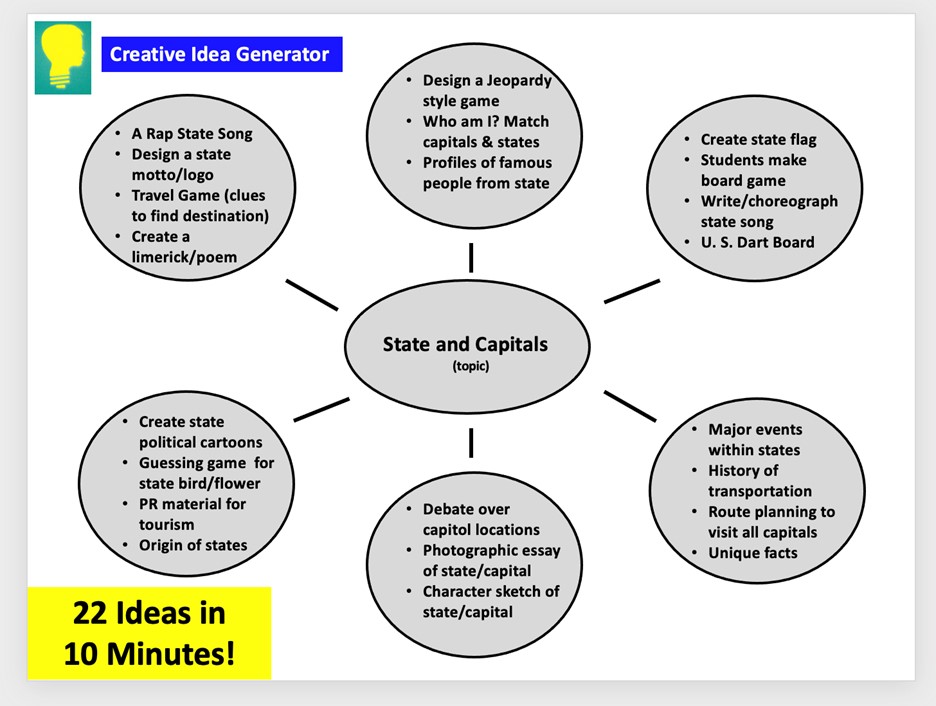NAGC works to support those who enhance the growth and development of gifted and talented children through education, advocacy, community building, and research
Joseph Renzulli, Ph.D.
This Blog is a follow-up to an earlier Blog titled, A Change in Pedagogy is the Answer and describes a professional development activity for teachers that enables then to infuse enrichment activities into prescribed curricular topics. The goal is to promote more enjoyment, engagement, and enthusiasm for learning than typically results from mainly memory-oriented instructional approaches.
Several favorable comments to the A Change in Pedagogy is the Answer blog regarding closing the achievement gap were also accompanied by very thoughtful questions about how we can actually make such changes. The brief description that follows is one approach to professional development that has been used with some success and it is hoped that others will contribute their ideas and experiences for this very challenging concern in education to Academia as well as other publications
First and foremost, many people would agree that state and ministry prescribed curriculum mandates such as the Common Core State Standards and the need to grind up achievement test scores have resulted in a pedagogy that is not unlike the way that Pavlov trained his dogs! And regardless of how many times policy makers change the names of such initiatives (Competency-Based, Skill-Based, Mastery-Based, Standards-Based, etc.), these top-down dictates for prescriptive curriculum will always be with us. The textbook/testing industrial complex is a very powerful lobbying group on chief state school officers and it has also placed teachers who want to try something different at the bottom end of the food chain when it comes to deciding what goes on in their classrooms. Trying to control what goes on in classrooms has gotten to the point that Florida lawmakers are currently debating a bill that would require school districts to put cameras in classrooms and microphones on teachers.
Nothing is going to get rid of the prescriptive curriculum; however, the approach described below is intended to jazz up the regular curriculum by providing teachers with a professional development activity that is easy to implement and brings out a great deal of creativity and enthusiasm among the teachers who have worked with this technique.
What is Curricular Enrichment Infusion? Curriculum Enrichment Infusion is defined as a process intended to provide extended learning opportunities and challenges to students in order to make a regular curriculum topic more enjoyable and engaging, thereby producing more enthusiasm for learning. Enrichment gives students more opportunities and incentive to study topics and concepts with greater depth and complexity.
The process begins by organizing teachers into small groups based on their interest in a particular subject matter area. They are provided with a list of the rules for brainstorming, the definition above, and examples such as the one presented below. Each group is given a Creative Idea Generator and one person is appointed as the recorder for the group. The following four guidelines are the only directions for guiding the group’s discussion.
Each group is first asked to identify a topic in their subject area group that is mainly a memory-oriented assignment and that is usually going to be a test question at the end of the unit of study. In the example that follows a group of middle grade social studies teachers agreed that memorizing the names of U.S. states and capitols mainly employed memorization. The figure below is an example of the collective suggestions made by three groups of teachers (three or four teachers per group) who participated in a professional development session using this process. In the months that followed, the teachers proudly sent me some of the results of the fun and innovative products created by their students. One example of extensive follow up was a group of students who found online a company that makes state shaped cookie cutters (http://www.cheapcookiecutters.com). They started a “baking company” and went to other classrooms where they taught about states and capitols by having students cut, bake, and decorate state shaped cookies, research the capitol’s location, and place a chocolate dot at the appropriate spot.

The biggest pay off from this activity is that the teachers, themselves, became more creative, and although they covered a require curriculum topic, they observed a much higher level of enjoyment and engagement on the parts of their students. The so called “regular curriculum” is not going to go away; but any mainly memory-oriented topic can be made more interesting and engaging with a little modification. Most importantly, it can improve the professionalization of a career that has largely been relegated to a dreary job of teaching students how to memorize rather than how to develop their thinking skills and creativity.
Joseph Renzulli, PH.D., is the Board of Trustees Distinguished Professor at the University of Connecticut.
The views expressed here are not necessarily those of NAGC.